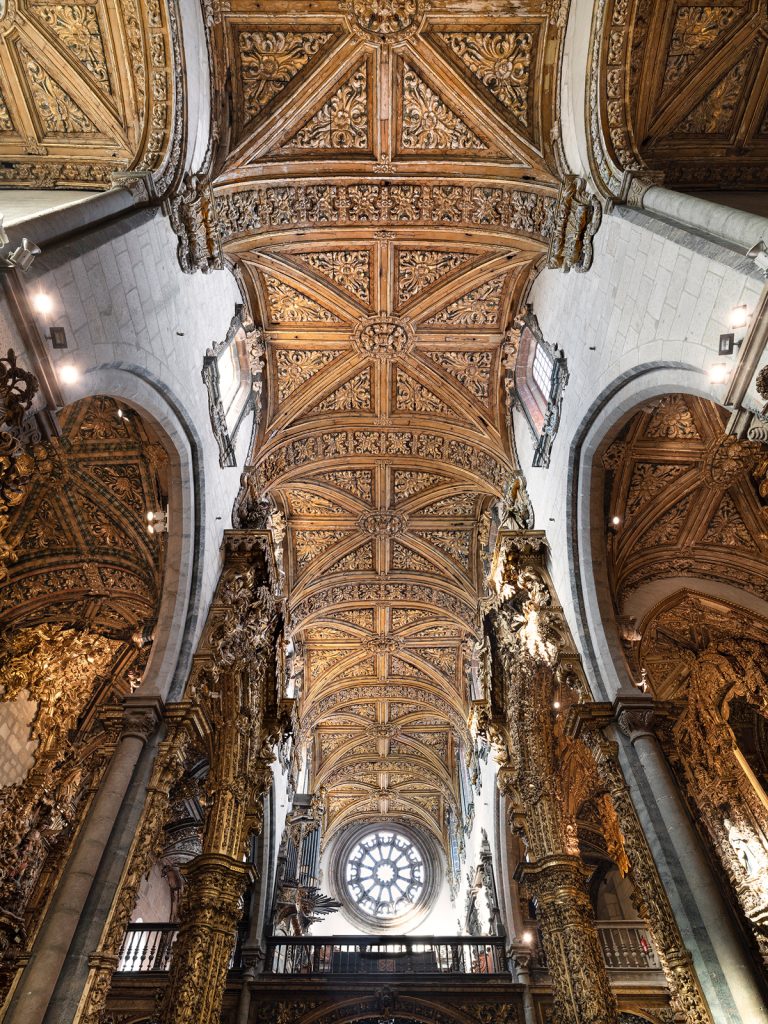
Forro dos tectos das naves
(Forro dos tectos das naves)
Data: 1732
Período/Estilo: Barroco Pleno ou Nacional
Entalhadores: Pantaleão da Fonseca, Remígio Moreira, José Ferreira Pinto e Manuel Ferreira Machado
Com excepção do revestimento que fica em frente ao retábulo de Nossa Senhora da Conceição (árvore de Jessé), de 1718, e o tramo que fica antes da entrada da capela de Nossa Senhora da Soledade, de 1764, todo o revestimento das naves e transepto da igreja corresponde a obra executada em 1732, ainda ao gosto do Barroco Nacional, reproduzindo florões envoltos por folhas de acanto mais ou menos enroladas entre si, em relevo encrespado, preenchendo grande parte da superfície disponível. Nos arcos torais, que dividem os tramos, a decoração está disposta em forma de cruz de Santo André, dando maior dinamismo ao forro. No cruzamento dos arcos surge um elemento decorativo em forma de grande flor, a lembrar uma peónia. A policromia das madeiras apenas seria executada em 1786.
